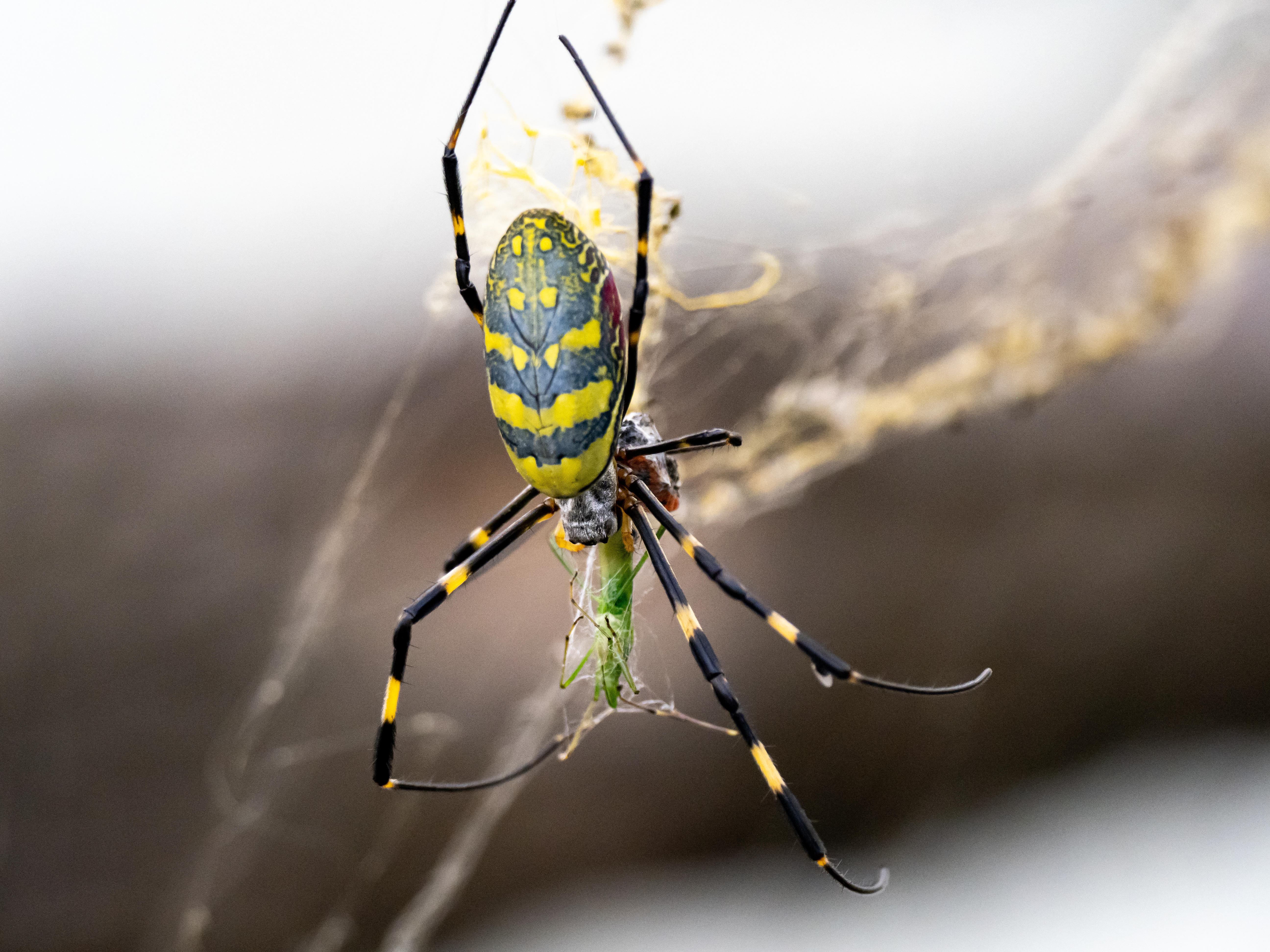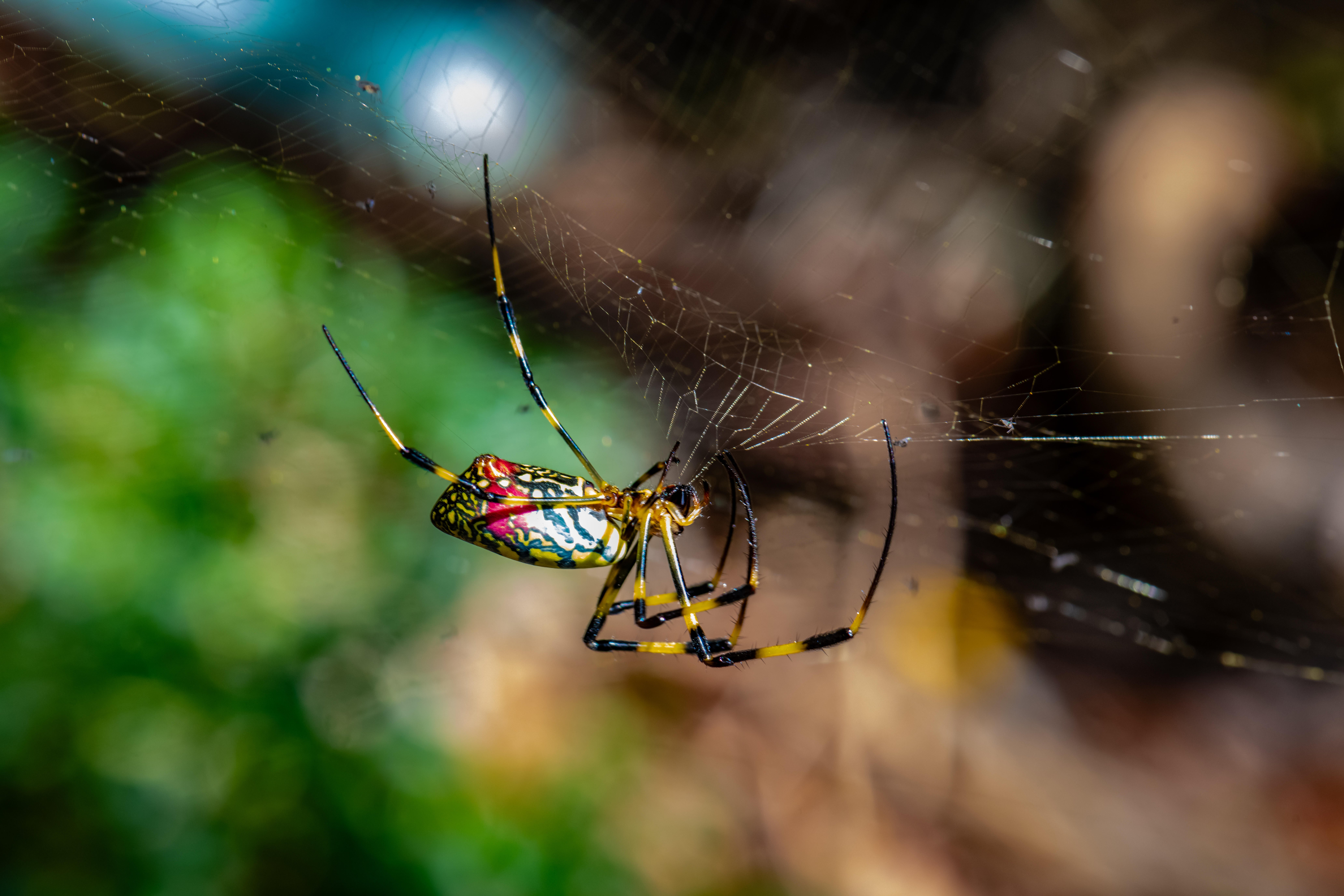Have you heard whispers of giant, flying spiders making their way across the US? The thought might send shivers down your spine, but the reality is more fascinating than frightening. The spotlight is currently on the Joro spider, a large and striking arachnid that has been making headlines due to its increasing presence in the United States. Originating from East Asia, these spiders have an intriguing method of dispersal that might be mistaken for flight. So, Is There A Flying Spider? Let’s delve into the world of Joro spiders and separate fact from fiction.
Perhaps the most captivating aspect of the Joro spider, beyond its imposing size, is its seemingly airborne adventures. While they don’t sprout wings and take to the skies like insects, Joro spiders utilize a technique known as “ballooning.” This method allows spiderlings, and sometimes even adult females, to travel considerable distances by releasing silk threads into the wind, essentially using them as parachutes. This remarkable ability has played a key role in their rapid spread across the Eastern United States. Despite this aerial talent and their impressive size, research indicates that Joro spiders possess a surprisingly timid nature. In fact, studies suggest they might be among the shyest spider species ever documented.
 Japanese Joro orb-weaver spider eating a grasshopper
Japanese Joro orb-weaver spider eating a grasshopper
Alt text: A vividly colored Joro spider, showcasing its yellow and gray body, is captured in a close-up shot while consuming a grasshopper in a Japanese forest setting.
Researchers at Clemson University have meticulously studied the dietary habits of these spiders and discovered they are not particularly fussy eaters. Joro spiders exhibit a broad appetite, happily consuming a variety of flying insects that become ensnared in their expansive webs. As researcher David Coyle noted, they are opportunistic predators and will readily devour anything that gets trapped, from brown marmorated stink bugs to even Monarch butterflies. Despite their predatory nature, Joro spiders are not considered a threat to humans or pets. Their primary diet consists of insects, and in urban environments, they are more likely to feast on common pests such as roaches or wasps, rather than posing any danger to larger animals.
The Joro spider’s journey to the United States is a story of unintended introduction. Native to East Asia, these spiders were first identified in Georgia around 2014. Their arrival is attributed to accidental transportation, likely through shipping containers. Since their initial detection, Joro spiders have thrived and multiplied, quickly becoming widespread throughout Georgia and beyond. Coyle recounts his personal experience of observing a Joro spider web nearly every few yards in his backyard, highlighting their rapid proliferation. Their ability to balloon has undoubtedly contributed to their swift territorial expansion from their initial point of entry.
 Joro spider (Trichonephila clavata) making her web nests
Joro spider (Trichonephila clavata) making her web nests
Alt text: A female Joro spider is depicted in the midst of constructing her intricate web, showcasing the golden silk characteristic of orb-weaver spiders, against a blurred natural backdrop.
Since their arrival in Georgia, Joro spiders have been documented across a growing number of states. Records compiled by iNaturalist indicate sightings in Alabama, Florida, Kentucky, Mississippi, North Carolina, South Carolina, Tennessee, Virginia, West Virginia, Ohio, and even Maryland. This widespread distribution underscores their adaptability and capacity to colonize new regions. Coyle’s research suggests that the Joro spider’s native climate range closely aligns with much of the eastern United States, predicting their continued spread northward. The increasing observations in states further north, like Maryland, corroborate these projections, indicating the ongoing expansion of their territory.
While Joro spiders are indeed venomous, the term “poisonous” is often mistakenly used. Venomous creatures inject toxins, whereas poisonous ones are toxic when ingested or touched. In the case of Joro spiders, their venom is primarily used to subdue prey and is not considered medically significant to humans. They are known to be non-aggressive and far more inclined to retreat than attack. Penn State Extension clarifies that Joro spiders are harmless to people and are reluctant to bite. Even in the rare event of a bite, the venom is weak and poses no serious health concern. Any discomfort from a bite is likely to be less severe than a bee sting, with only localized pain and redness that quickly subside.
Research into spider behavior further supports the Joro spider’s timid reputation. A University of Georgia study involving 450 spiders from various species revealed that Joro spiders exhibit an extreme “freeze” response to disturbances. While most spiders briefly pause activity, Joro spiders become virtually immobile for over an hour when startled. This prolonged stillness, shared only with their close relative, the golden silk spider, emphasizes their inherently shy nature. Researcher Andy Davis emphasizes that “these spiders are really more afraid of you than the reverse,” underscoring their non-threatening disposition. Furthermore, even if provoked to bite, their fangs are likely too small to effectively penetrate human skin.
Alt text: A detailed, eye-level photograph captures a Joro spider, showcasing its distinctive yellow stripes and intricate web patterns, highlighting its unique characteristics as a subject of arachnid interest.
Despite their startling size and appearance, experts advise against killing Joro spiders. While they might evoke squeamishness, their ecological impact appears to be minimal, and they are not considered pests in the traditional sense. Pesticides are an unnecessary and potentially harmful solution, as they indiscriminately kill beneficial insects and other creatures. Instead, physical relocation is recommended if a Joro spider or its web is inconveniently placed, such as inside a home. Simply using a stick or broom to move them to a different location is sufficient. Davis’s research suggests that while they are an invasive species, Joro spiders have not yet demonstrated significant negative effects on local ecosystems, although ongoing research is necessary to fully understand their long-term impact. The prevailing recommendation is to learn to coexist with these spiders. As Orkin, a pest control service, suggests, moving them away from homes or removing their webs is usually adequate.
Female Joro spiders are notably large, with bodies reaching up to an inch in length and leg spans extending to four inches. To put this in perspective, their leg span can cover a significant portion of an average woman’s hand. Male Joro spiders are considerably smaller, with body lengths just over a quarter of an inch and a more brownish coloration. However, even more impressive than their body size are their webs. These expansive webs can span over six feet, with some reports indicating widths of up to ten feet. These massive webs are a testament to their orb-weaving capabilities and contribute to their noticeable presence in the environment.
So, to circle back to the initial question, is there a flying spider? While Joro spiders don’t fly in the conventional sense, their ballooning behavior allows them to travel through the air, effectively making them airborne spiders. Spiderlings, and sometimes adult females, utilize this technique to disperse and colonize new areas, sometimes traveling remarkable distances. Penn State Extension explains that spiderlings can move “tens to hundreds of miles” via ballooning, demonstrating the effectiveness of this dispersal method, especially when aided by favorable winds.
In conclusion, the Joro spider is indeed a remarkable creature. While the idea of a “flying spider” might sound alarming, understanding their behavior and nature reveals them to be more of a fascinating phenomenon than a threat. Their ballooning ability is a remarkable adaptation for dispersal, and despite their size, they are shy and harmless to humans. As they continue to spread across the US, learning to coexist with these giant, airborne arachnids seems to be the most sensible and ecologically sound approach.